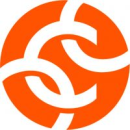In the earliest return-to-work days amid the Covid-19 pandemic, Annie Rosencrans saw that many people were dragging themselves into their workplaces only to find their offices nearly empty.
This taught her an important lesson.
“If you’re going to ask employees to come back to the office, make sure it’s worth their while,” said Rosencrans, HiBob’s people and culture director.
With hybrid models here to stay, it’s essential that leaders are setting and managing clear expectations for their teams’ in-person work. Rosencrans and leaders from five other New York companies — Chainalysis, Yotpo, Meetup, Dailymotion and monday.com — are intentional about crafting hybrid policies that maximize employees’ in-office time.
While employees love the flexibility that remote work brings, most also see the value of human-to-human interactions, making hybrid environments the ideal compromise. According to Zippia, 83 percent of employees want a hybrid model, and 87 percent believe that in-person work is important for collaborating and building relationships with team members.
However, without a shared understanding of why and when onsite work occurs, employees may be reluctant to brave their busy commutes and relinquish the comfort and freedom they’ve become accustomed to in remote settings.
Through implementing a number of diverse strategies, including assigned in-office days, tech-equipped meeting spaces, team lunches and in-person celebrations, these featured respondents are fostering flourishing hybrid workplaces — and they have helpful advice to share for fellow leaders hoping to do the same.
Chainalysis tracks and investigates cryptocurrency practices for banks, businesses and government agencies.
As a hybrid organization, how does Chainalysis treat its office space, and how has that evolved over the last few years?
It’s constantly evolving! We moved into our new headquarters after Covid-19 and in the middle of a hyper-growth period, so not only did we have no real baseline to build from an existing space, but we also needed to think about a head count that we had never experienced. It really did feel like building a brand-new community.
We started with the standards of catered lunches, happy hours on our building’s rooftop, rooms with seemingly unlimited whiteboard space, and private quiet areas or zen rooms for when we need a breather. We also do our best to provide every flavor of La Croix that we can find in the refrigerator.
Our goal is to make everyone know they are welcomed and cared for the moment they arrive.”
When teams are in the office, how do you maximize that time together to ensure it is productive?
Our goal is to make everyone know they are welcomed and cared for the moment they arrive. To that end, we encourage teams to think ahead and let our people and office experience team — also known as our “POETs” — know when they are planning team get-togethers, group work days and onsite guests or clients visits. We will arrange special catering, room setups, tweak A/V and display needs, and everything in between within reason.
By helping prepare for these visits, it allows employees to spend their time in the office doing what they’re there to do: building great things.
What tips do you have for other leaders at hybrid companies who want to make the best use of their physical office spaces?
Be open to suggestions. Leadership and facilities teams can plan and build offices that are amazing, but no two organizations are the same in how they actually wind up using the workplace. Listen to feedback from employees on what works and what doesn’t. Not only will it create a space more conducive to their own needs, but it will also provide a firmer sense of pride and ownership across the community. Also, a wine cellar can prove quite popular.
HiBob enables HR and managers at mid-size businesses to connect, develop and retain their talent.
As a hybrid organization, how does HiBob treat its office space, and how has that evolved over the last few years?
HiBob U.S. is a truly blended workplace. With about 50 percent of our employees working remotely and the other 50 percent living and working in New York, we see our office as a central hub for connecting, collaborating and developing our Bobbers to enhance our culture and drive engagement.
When designing the office, we optimized the space for collaboration by building a lot of meeting rooms, a spacious cafe area and “flex space” for hosting all-hands meetings, group trainings, client and customer events, and wellness activities like yoga and meditation. We also recognize that many workers have become accustomed to a more quiet and secluded at-home working environment, so we invested in private call booths to allow them that space and privacy when they need it.
Unlike offices of the past, the modern-day workplace has evolved to be less about individual work execution and more about creativity, collaboration and socialization. It's critical that the office is designed to support and reinforce these things.
When teams are in the office, how do you maximize that time together to ensure it is productive?
Bobbers are encouraged to organize their schedules to ensure that work-from-home days are designated for mostly heads-down work, while office days are designated for team meetings, trainings and other programming that’s best delivered live and in person. This way, employees make the most of the hybrid arrangement by spending their days at home doing focused work and their time in the office collaborating with team members.
For the New York metro area locals, we offer Wednesday team lunches and Thursday happy hours to help foster cross-functional connections. We recognize that collaboration happens more readily when employees know, understand and respect one another, so we see this as an investment that pays dividends on business productivity. Outside of the day to day, we bring our managers to New York every quarter for leadership development and strategy meetings, and at least once a year, we bring all of our U.S. employees together for our annual end-of-year HiBob anniversary celebration.
Employees make the most of the hybrid arrangement by spending their days at home doing focused work and their time in the office collaborating with team members.”
What tips do you have for other leaders at hybrid companies who want to make the best use of their physical office spaces?
If you’re going to ask employees to come back to the office, make sure it’s worth their while. That means having comfortable working conditions, reliable technology such as fast Wi-Fi and, crucially, access to other employees.
In the chaotic return-to-work trend, many companies gave employees discretion to decide when they wanted to go into the office. While that flexibility is nice in theory, without the structure of designated in-office days, many employees came to realize that their team members weren’t in person on the same days that they were. This resulted in less productive and often lonely days in big, empty offices. Assigned days in the office, even if it's just once a week, result in lively, more productive in-office days that reinforce company culture and improve employee engagement.
If all else fails, the occasional free meal or surprise afternoon treat is always an effective way to motivate your employees.
Yotpo provides an e-commerce marketing platform for brands such as Rebecca Minkoff, Bob’s Discount Furniture and Steve Madden.
As a hybrid organization, how does Yotpo treat its office space, and how has that evolved over the last few years?
Our office is used as a space to come together, whether that's for team meetings, training sessions, company all-hands meetings or events like “Conversations at Yotpo,” during which we conduct interviews with interesting people in our industry.
When I need to schedule a workshop or presentation, I aim to do that on an in-office day. Similarly, our people experience team does an incredible job with programming so that there's a good chance that something fun is always going on when we're in the office.
I view the office as a home base. I know I can always go there to find at least a handful of colleagues. Even on a Friday, I know I'll bump into someone, and you never know if that someone is a VP or our CEO. For me, this has really fostered a sense of community.
When teams are in the office, how do you maximize that time together to ensure it is productive?
We try to conduct team meetings on office days so that we can connect in person rather than on Zoom. The energy of a team meeting when we're sitting in a room together, laptops closed, feels much better than in a virtual meeting. There's more laughter and engagement.
We are fortunate to have lunch brought in on some office days, and everyone sits in the kitchen together to mingle while we eat. It's really nice to walk into the kitchen and see almost 100 people sitting at tables, sharing a meal with people with whom they work cross-functionally. That type of energy can't exist virtually.
The effort and resources that go into making our office a welcoming and comfortable environment continue to feel like an investment from leadership into us and our future.”
What tips do you have for other leaders at hybrid companies who want to make the best use of their physical office spaces?
The effort and resources that go into making our office a welcoming and comfortable environment continue to feel like an investment from leadership into us and our future as an organization. When you walk into our office, it feels like a place where people can get quality work done and a place where we can proudly welcome guests.
By using the physical office as a space for team events, company all-hands meetings, larger events and workshops, we hope that people feel at home there. By slowly welcoming and encouraging people to return, it's less of a stark adjustment and more of a gradual coming back to a less regimented version compared to pre-Covid-19.
I thrive on structure and routine, and I began coming back to our office almost daily when I moved back to New York in the summer of 2021. I don't think it's a coincidence that in this time I have thrived at work, been promoted multiple times and ultimately earned the opportunity to lead our team. When you leave your home, put on real clothes, join calls with an office in the background, collaborate with other folks in the office and have the occasional kitchen interaction with executives, you'll probably get something great out of it.

Meetup offers a platform where people can arrange hangouts over shared interests.
As a hybrid organization, how does Meetup treat its office space, and how has that evolved over the last few years?
Meetup views its office space as a place for team collaboration, project meetings and human connection. Due to the Covid-19 pandemic, we closed our New York headquarters and transitioned into being a fully remote organization as of June 2020. We saw a similar trend with events on our platform. As most of our events transitioned from in person to remote, we wanted to make sure the organization and its employees also transitioned.
Our demographics had changed in the one-and-a-half years of the pandemic. In February 2020, we had 70 percent of our employees based out of New York. In August 2022, we had 55 percent. As a result, we decided to rent a smaller office and be a part of a co-working space.
The new office space now serves as a place for local employees to meet, collaborate and build products that help people find and create communities. Over the past few years, Meetup's use of its office has evolved from a workspace that was divided into department pods to an open workstation where teams can come together and connect, both on professional and personal levels.
When teams are in the office, how do you maximize that time together to ensure it is productive?
At Meetup, we have a policy that requires our employees to come in once a week, and we make sure to maximize our time together by encouraging teams to choose the day they will be in the office. We have designated days for different teams; for example, the finance team is in person on Tuesdays and the data and product teams are in the office on Wednesdays. This approach fosters team collaboration.
We also host biweekly town hall meetings called “Meetupdate” in the office, which helps us connect in a real hybrid way; half of the team is in the office, while half of the team is remote.
In addition, we value personal connections among our teams. One way that we facilitate this is through food. We order catered lunches on different days to provide opportunities for real human connections to happen over meals. We also organize in-office fun events such as poker nights, potlucks, Halloween costume competitions and parties; we also have employee resource group events, which are typically held during work hours from 3 to 4 p.m. to ensure that people can participate while maintaining their work-life balance. These activities help our teams bond and enjoy their time in the office beyond just working together.
Employees will come to the office if you create enough reason for them to come.”
What tips do you have for other leaders at hybrid companies who want to make the best use of their physical office spaces?
Having a clear and flexible office policy, along with buy-in from leadership, is required for a smooth transition. Managers should lead by example and follow the same guidelines as everyone else. Regularly evaluate and adapt your office policies to ensure that they meet the changing needs of your team and organization. Stay open to feedback from your team and be willing to make changes as necessary.
Beyond work, offices can also serve as a place for team building and personal connections. Organizing social events, such as get-togethers, parties and lunch hangouts, helps foster these relationships and create a positive workplace culture.
Employees will come to the office if you create enough reason for them to come. We have meeting rooms that are equipped with Zoom setups so that it's easy for employees to attend hybrid meetings. We also host in-person New York borough meetups for our employees so that folks can get to know each other.
We have also started doing themed team events. For example, our people team hosted a poker evening a few weeks back that was a hit. When planning in-person events, try to include your remote folks so that nobody feels left out. For example, our CPR office training is only for in-person employees, but we reimburse remote employees if they take a CPR training near them. Another example is that our meditations event is in our New York office, but our employees can also join remotely.
Another tip is to consider the layout and design of your office space. Ensure that there are ample spaces for collaboration and creative thinking, such as meeting rooms, breakout areas and communal spaces. At the same time, provide private areas for individuals who need to focus on individual work.
Dailymotion provides a video streaming service for music, sports, news and entertainment.
As a hybrid organization, how does Dailymotion treat its office space, and how has that evolved over the last few years?
The office is a space that helps teams cohesively achieve their objectives. It’s a place to engage with others, have organic conversations that wouldn’t typically happen over Zoom, build strong relationships via face-to-face interactions and create synchronicity among teams.
We really had to teach ourselves how to work asynchronously over the last couple years, and how we maintain relationships with our coworkers has evolved. Slack messages and video calls can sometimes result in less context versus in-person communication, where you can easily read body language and get a better sense of underlying tones.
Of course, working asynchronously and virtually is effective, but in-person interactions result in stronger relationships and allow collaborative projects and tasks that require more context to progress smoother and quicker. Some of the most creative and impactful ideas emerge when you get the opportunity to interact in person with folks from other teams who you typically wouldn’t interact with.
When teams are in the office, how do you maximize that time together to ensure it is productive?
Team and one-on-one meetings are typically scheduled for when respective teams are in the office so that they can align on objectives and projects while strengthening interpersonal relationships.
It’s important that we foster a sense of community so that everyone feels a sense of belonging in the workplace. We provide onsite catered lunches every Tuesday, and we organically eat together then. We hold monthly in-office stand-ups so that employees stay connected through team updates and are recognized for milestones such as achievements, anniversaries and birthdays.
I recommend making the space as inviting and comfortable as possible and providing amenities that employees would have access to when working from home.”
What tips do you have for other leaders at hybrid companies who want to make the best use of their physical office spaces?
I recommend making the space as inviting and comfortable as possible and providing amenities that employees would have access to when working from home; basic items like coffee, tea and snacks and equipment from the pre-Covid-19 era, such as monitors and white boards, can help nurture a comfortable and communal environment.
If feasible, dogs in the office are an instant mood booster. They teach us compassion and provide support, which are key in an inclusive community that welcomes everyone.
Software company monday.com specializes in creating work operating systems.
As a hybrid organization, how does monday.com treat its office space, and how has that evolved over the last few years?
Over the last few years, our work habits have changed and office spaces should reflect this. For us at monday.com, that meant designing our offices for the post-pandemic era, and we’ve been incredibly intentional about creating unique, community-oriented spaces to make teams inspired to collaborate.
In-person collaboration is part of monday.com’s foundational values. It has always been important to us and we know it is important for our success. In each office, there are nooks every few steps to encourage people to gather –– from workstations set up in a living room setting to brainstorming areas by coffee stations, collaborative meeting rooms and so much more. We also kept in mind that people have become accustomed to working in different types of environments, which is why we also have designated quiet spaces.
When teams are in the office, how do you maximize that time together to ensure it is productive?
We emphasize both team and community time while in the office. For example, in our New York office, our “members’ club” was created to encourage and provide opportunities for small talk in a comfortable space. Not only do we serve breakfast and lunch throughout the week here, but it is also where the majority of our in-office programming and events take place. This has set the tone that the members’ club is for togetherness. Even outside the big moments in this space, we see that our people gather there in between meetings or calls to catch up with their colleagues or get those quick wins over the finish line in an informal setting.
In addition, we provided our leaders and managers the discretion of choosing how their teams work by identifying the days and times they spend in the office versus at home. Within this, most leaders have opted to set “team days'' throughout the week. This effort ladders up to our main goal of having people collaborate with each other in person and continue to build and mature the great communities that exist at monday.com.
Your office is an investment in your people. Listen to your employees to make sure you’re providing the space they need to be successful.”
What tips do you have for other leaders at hybrid companies who want to make the best use of their physical office spaces?
Your office is an investment in your people. Listen to your employees to make sure you’re providing the space they need to be successful.
At monday.com, our team’s input was woven into every element of our office design to ensure we were providing the best in-office experience. For example, we opened the floors in our New York office in phases, so we could gain feedback and integrate it into the next floor design. We heard people wanted more meeting rooms and phone booths to get their work done, so we built them.
They also provided suggestions of what our “concept rooms” for breaks and entertainment could look like, which resulted in us installing a small putting green to give our growing population of golf advocates a place to take a break and recharge while working on their short game. We were able to deliver a truly special and unique environment because of their invaluable feedback.

















